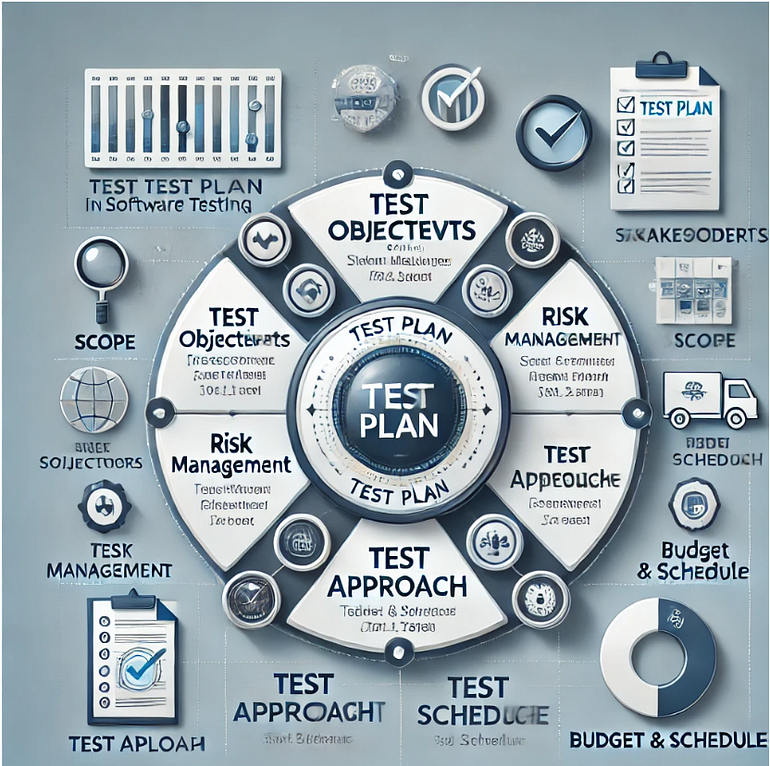TesPurpose and Content of a Test Plan
Introduction
A test plan is a critical document in software testing that outlines the objectives, scope, resources, and schedule for a testing project. It ensures that testing activities align with project goals, helps manage risks, and serves as a communication tool among stakeholders. A well-structured test plan contributes significantly to the success of a software project by identifying potential challenges and planning accordingly.

Purpose of a Test Plan
A test plan serves several key purposes:
- Defines the objectives: It outlines what the testing process aims to achieve.
- Ensures alignment with project goals: It helps ensure that the testing activities meet predefined criteria and business objectives.
- Provides a structured approach: It defines test execution strategies, methodologies, and best practices.
- Facilitates communication: It acts as a communication tool for team members, project managers, developers, and stakeholders.
- Manages risks: Identifies potential risks related to testing and offers mitigation strategies.
- Ensures compliance: It aligns testing efforts with organizational policies, strategies, and standards, such as the ISO/IEC/IEEE 29119–3 standard.
Content of a Test Plan
The test plan includes various elements that define the testing scope, responsibilities, and execution strategy. Below are the key components:
1. Context of Testing
Defines the scope, objectives, and constraints of the testing project. This section may include details on the test basis, dependencies, and any relevant business or technical considerations.
2. Assumptions and Constraints
Identifies assumptions made during planning and constraints that may affect testing activities, such as time, resources, and technical limitations.
3. Stakeholders
Lists key individuals involved in the testing process, including their roles and responsibilities. This may include testers, developers, project managers, and business analysts.
4. Communication Plan
Specifies how communication will be handled, including:
- Frequency and format of status updates
- Documentation templates
- Reporting structure
5. Risk Register
Documents potential risks related to the product and project, including:
- Product risks (e.g., critical functionality failure)
- Project risks (e.g., resource limitations, tight deadlines)
- Mitigation strategies for identified risks
6. Test Approach
Outlines the overall strategy for testing, covering aspects such as:
- Test levels (unit, integration, system, user acceptance testing)
- Test types (functional, non-functional, performance, security, etc.)
- Test techniques and methodologies
- Entry and exit criteria
- Test independence (ensuring unbiased testing)
- Metrics to track test progress
- Test data and environment requirements
- Deviations from organizational test policy or strategy (if any)
7. Budget and Schedule
Defines the estimated effort, time, and budget allocated for testing. It includes:
- Resource planning (testers, tools, infrastructure)
- Timeline for different phases of testing
- Cost estimation
Conclusion
A well-structured test plan is essential for ensuring a smooth and effective testing process. It provides clarity, reduces uncertainties, and aligns testing activities with project goals. By following best practices and industry standards like ISO/IEC/IEEE 29119–3, teams can create comprehensive test plans that contribute to software quality and project success.